Hermeus Quarterhorse Mk 1 takes flight marking a big step toward fielding world’s fastest jet
- By Alex Hollings
Share This Article
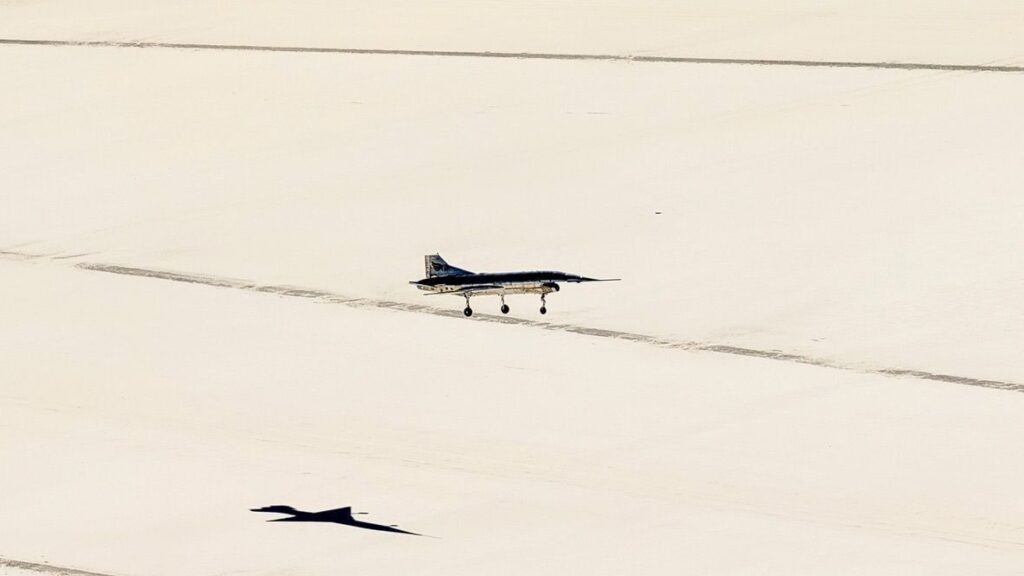
Hermeus has officially taken flight with its Quarterhorse Mk 1 technology demonstrator, marking a significant step toward its goal of fielding a fully reusable uncrewed hypersonic aircraft.
This first successful test flight, announced on May 27, was centered on demonstrating the Quarterhorse Mk 1’s high-speed take-off and landing capabilities, which are essential due to Quarterhorse’s high-Mach design. Hermeus also made a point to highlight just how quickly the aircraft matured into a flight-ready test article, going from a clean sheet design to a flyable demonstrator in just over a year.
“Mk 1 has redefined the pace of developing and flying new aircraft,” said Hermeus CEO and Co-Founder, AJ Piplica in a press release. “I’m incredibly proud of what our team has accomplished. We’ve proven the viability of our iterative development approach. But this is just the start. We have much more to do as the bar rises for the next iteration.”

According to the company’s press release, this first test flight also validated the firm’s digital design and performance models, including aerodynamics, stability and control, alongside a long list of subsystems like propulsion, fuel systems, hydraulics, power, thermal management, avionics, flight software, telemetry, flight termination, and command and control.
Hermeus has taken an aggressive approach to developing Quarterhorse into a high-supersonic testbed while developing the internal skillsets necessary to rapidly field advanced new airframes, starting with the Quarterhorse Mk 0. This non-flying prototype, internally dubbed “Ironbird,” was unveiled in October 2023. Like the Mk 1, it had been designed and built on an extremely short timeline, going from a design on paper to testbed demonstrator in just 204 days.
By January 2024, Hermeus reported that its new Quarterhorse Mk 0 had successfully demonstrated the functionality of the aircraft’s power and control subsystems during taxi tests at the Arnold Engineering Development Complex (AEDC) in Tullahoma, Tennessee.
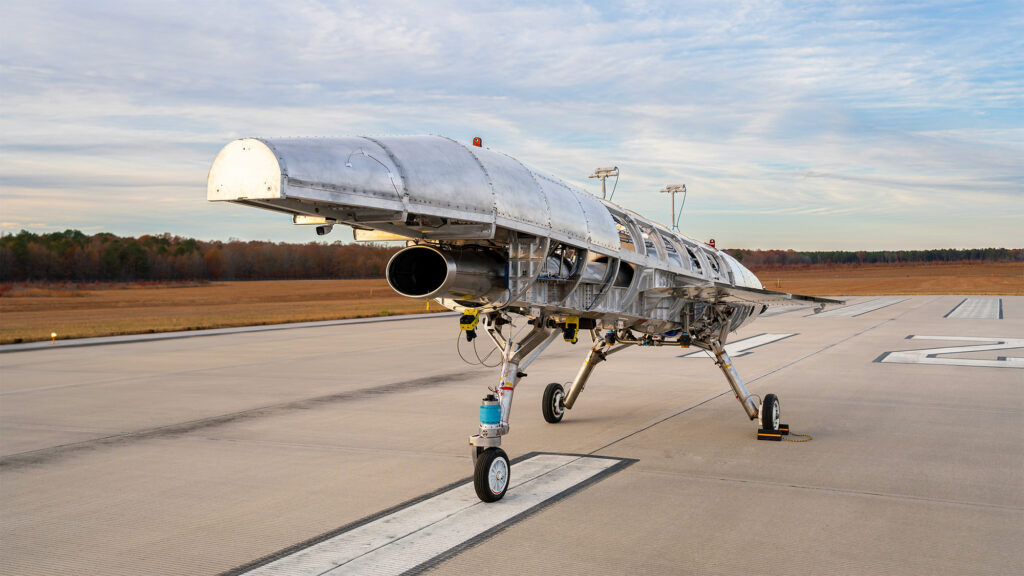
And now, just 16 months after Quarterhorse Mk 0 began taxiing down the runway, its successor, the Mk 1, has officially taken flight. This effectively already completes the testbed’s technical objectives of demonstrating Hermeus’ ability to build a heavy uncrewed aircraft that balances the rigors of high-supersonic flight against the lower-speed control required to take-off and land on conventional runways.
The SR-71 Blackbird, which was the fastest reusable crewed jet in history, faced similar challenges due to its high-speed design. With a disclosed top speed of Mach 3.2 and a wingspan that was nearly half that of the U-2, the SR-71 was forced to land at much higher speeds than most aircraft – often as high as 265 miles per hour during its approach and 207 miles per hour at touchdown. High-speed fighter aircraft, like the Mach 2-capable F-16, on the other hand, can land at speeds as low as just 150 miles per hour.
Likewise, Hermeus’ Quarterhorse stretches some 40 feet long, but boasts a wingspan of just about 12 feet, or a bit more than a third the width of an F-16’s outstretched wings.
With the first flight of Quarterhorse Mk 1 in the books, Hermeus will now begin revising its designs for already-in-development Quarterhorse Mk 2, which the company says will be the first of these technology demonstrators to fly beyond the sound barrier. This new aircraft will build upon the flight control and sub-system successes of Mk 0 and 1, validating the same control systems and functionality at speeds of between Mach 1 and Mach 3 as Hermeus continues working toward the final iteration of Quarterhorse: the high-supersonic Mk 3.
Related: Navy bolsters its aircraft carriers’ defenses with expendable loitering interceptors
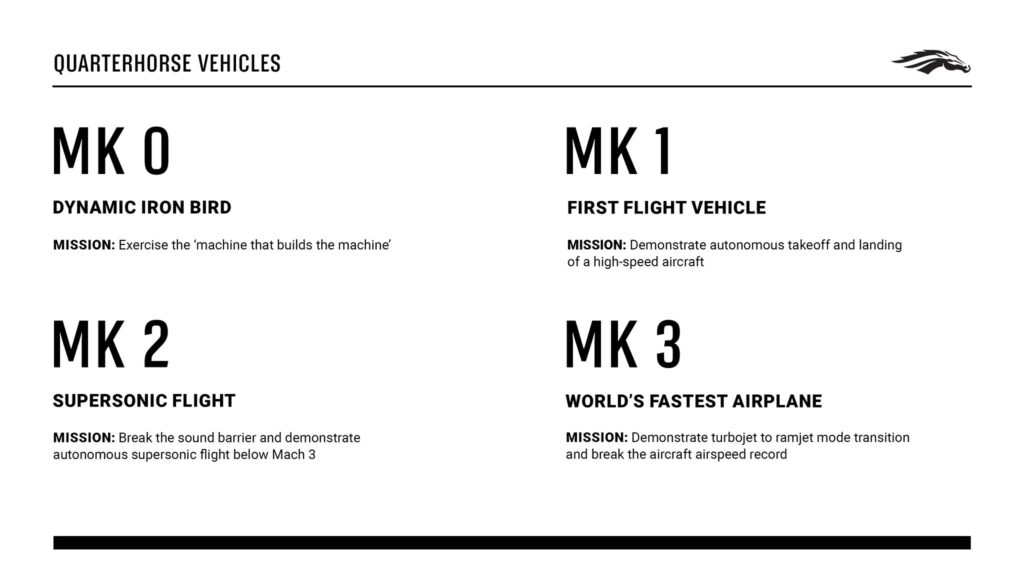
This aircraft will be the culmination of Hermeus’ efforts until that point: It will combine the airframe maturation derived throughout the Quarterhorse program with “Chimera,” the company’s unique high-speed propulsion system design.
This turbine-based combined-cycle engine could be thought of as two engines in one: A J85 turbojet followed by a ramjet. Turbojets are adept at powering aircraft from a complete stop and up to around Mach 3, though their efficiency tends to drop off at speeds above Mach 2. Ramjets take over at high speeds, accelerating from Mach 3 to hypothetical speeds as high as Mach 6. Chimera’s ramjet is designed to accelerate Quarterhorse past Mach 4 and potentially even beyond Mach 5 at altitudes as high as 95,000 feet – both faster and higher than the SR-71 could fly.
Hermeus successfully demonstrated Chimera’s ability to transition from turbojet to ramjet power in a high-speed wind tunnel as early as November 2022, but Quarterhorse Mk 3 will be the first aircraft in history (that we know of) to demonstrate this functionality.
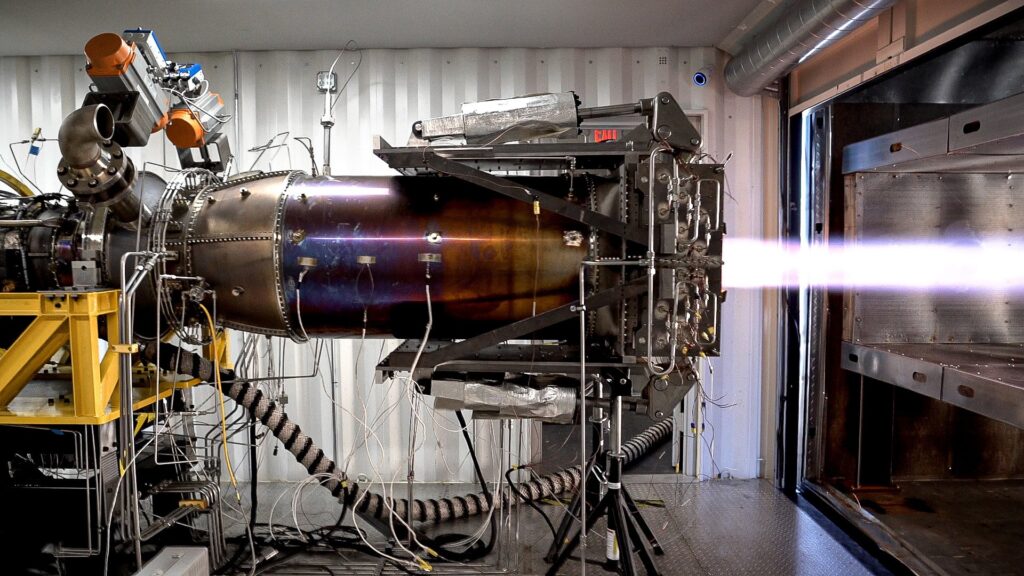
Yet Hermeus’ plans do not end with Quarterhorse. With the lessons learned throughout this effort, Hermeus will then begin development on its Darkhorse hypersonic military aircraft that will be powered by two larger Chimera engines developed around the powerful and proven Pratt & Whitney F100 turbofan engine. To that end, Hermeus broke ground on a new hypersonic engine test facility in Jacksonville, Florida in September 2024.
This facility, dubbed the High Enthalpy Air-Breathing Test Facility, or HEAT for short, will allow Hermeus to rapidly iterate on both aircraft and engine design, something Hermeus’ Chief Revenue Officer, Zach Shore, emphasized in our conversation with him earlier this year. Though Shore also mentioned that Hermeus’ own testing won’t fill the facility’s entire testing schedule capacity; this will allow the company to sell test time to other firms or even the Air Force itself for any of the reported 70 or so hypersonic weapon and aircraft applications currently drawing funds from the Pentagon’s coffers.
This is very important in the realm of hypersonic aviation, as some of America’s biggest challenges in recent years when it comes to hypersonics has been a lack of sufficient testing infrastructure, compounded by the need for more raw data about how designs perform in the hypersonic regime.
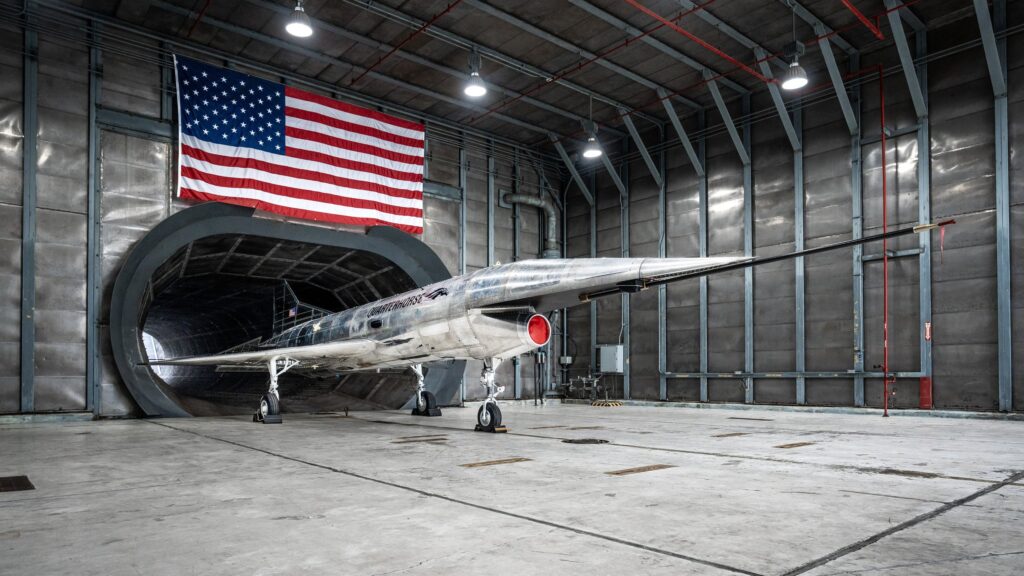
Once complete, Darkhorse could provide the U.S. Air Force with a similar high-speed intelligence, surveillance and reconnaissance capability once provided by the SR-71 – a capability that is sorely needed despite America’s increasingly ubiquitous satellite infrastructure.
But maybe even more importantly, Darkhorse could deliver payloads to far-flung targets at speeds in excess of Mach 5, providing the same short timeline and immense kinetic power of a modern hypersonic missile but at a fraction of the cost per strike.
In keeping with Hermeus’ rapid iterative approach, the company says its slightly larger Mk 2 Quarterhorse supersonic demonstrator is already on track to fly later this year, which is an all but unheard of timeline. As Hermeus’ CEO has explained in the past, the aviation standard for new designs is roughly 1,400 days, or around three and a half years. At this pace, Hermeus will have fielded and tested three aircraft in roughly the same amount of time.
Read more from Sandboxx News
- Unusual and unconventional artillery shells
- US Navy receives its 250th MK49 RAM air defense system, the last line of defense of many of its ships
- $580 million contract awarded to Raytheon for new Navy jammer
- The incredible true story of American fighters taking on an Iranian drone swarm and winning
- Canada’s superior C7 and C8 – Service rifles from around the world
Related Posts
Sandboxx News Merch
-

‘Kinetic Diplomacy’ Bumper Sticker (White)
$8.00 Add to cart -

F-35 ‘Evolution’ Framed Poster
$45.00 – $111.00Price range: $45.00 through $111.00 Select options This product has multiple variants. The options may be chosen on the product page -

A-10 ‘Warthog’ Poster
$22.00 – $28.00Price range: $22.00 through $28.00 Select options This product has multiple variants. The options may be chosen on the product page

Alex Hollings
Alex Hollings is a writer, dad, and Marine veteran.
Related to: Airpower, Breaking News

Frosted misery: A Navy SEAL in SERE School

How US Special Forces took on Wagner Group mercenaries in an intense 4-hour battle
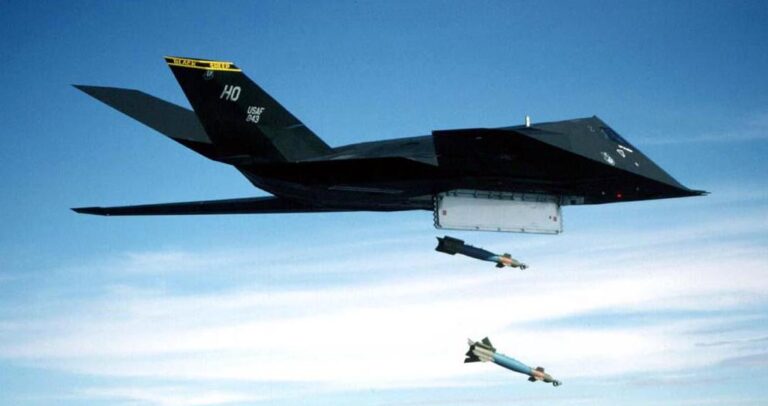
It took more than stealth to make the F-117 Nighthawk a combat legend
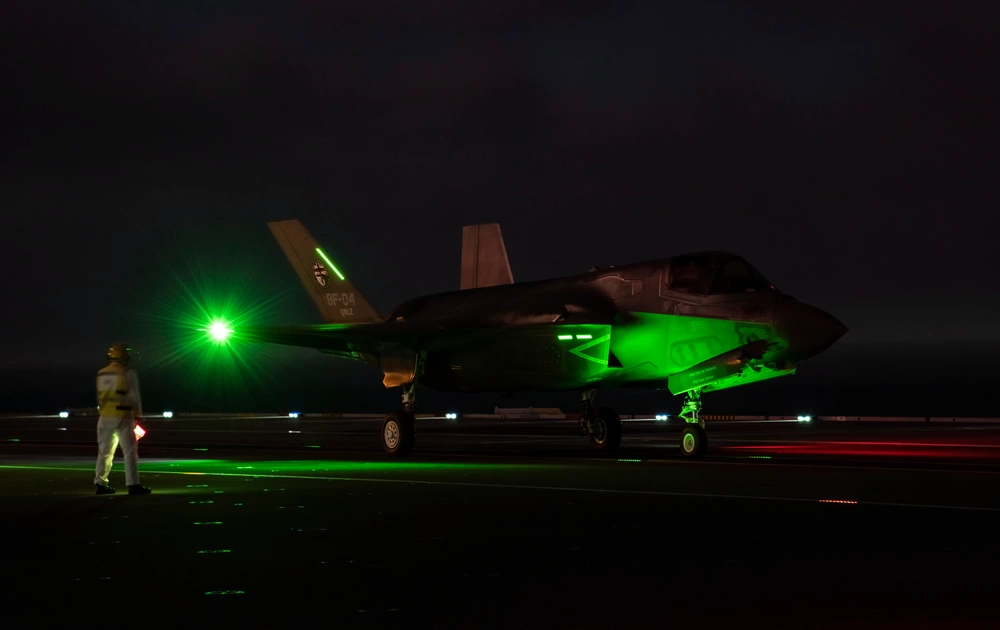
New material from North Carolina State University could revolutionize stealth aircraft (and even warship) design
Sandboxx News
-

‘Sandboxx News’ Trucker Cap
$27.00 Select options This product has multiple variants. The options may be chosen on the product page -

‘AirPower’ Classic Hoodie
$46.00 – $48.00Price range: $46.00 through $48.00 Select options This product has multiple variants. The options may be chosen on the product page -

‘AirPower’ Golf Rope Hat
$31.00 Select options This product has multiple variants. The options may be chosen on the product page -

‘Sandboxx News’ Dad Hat
$27.00 Select options This product has multiple variants. The options may be chosen on the product page
